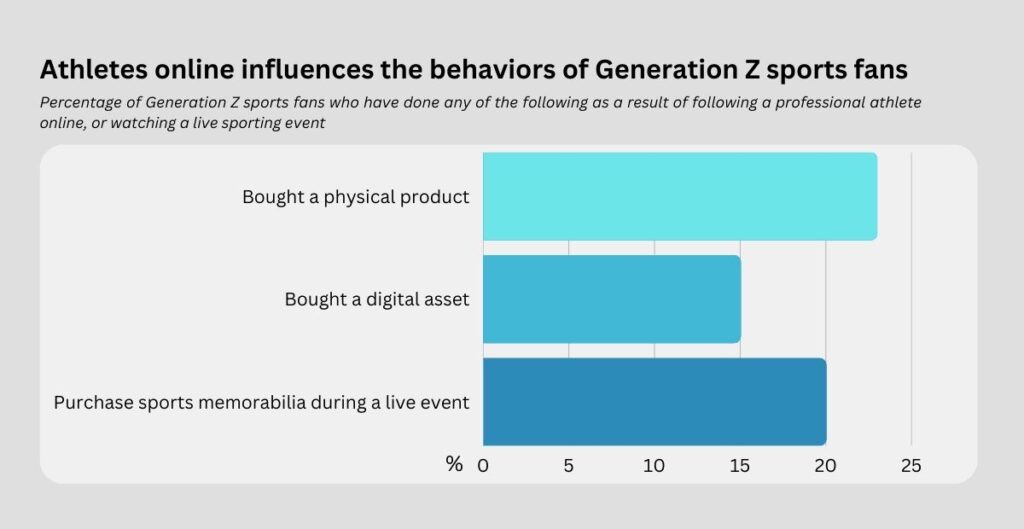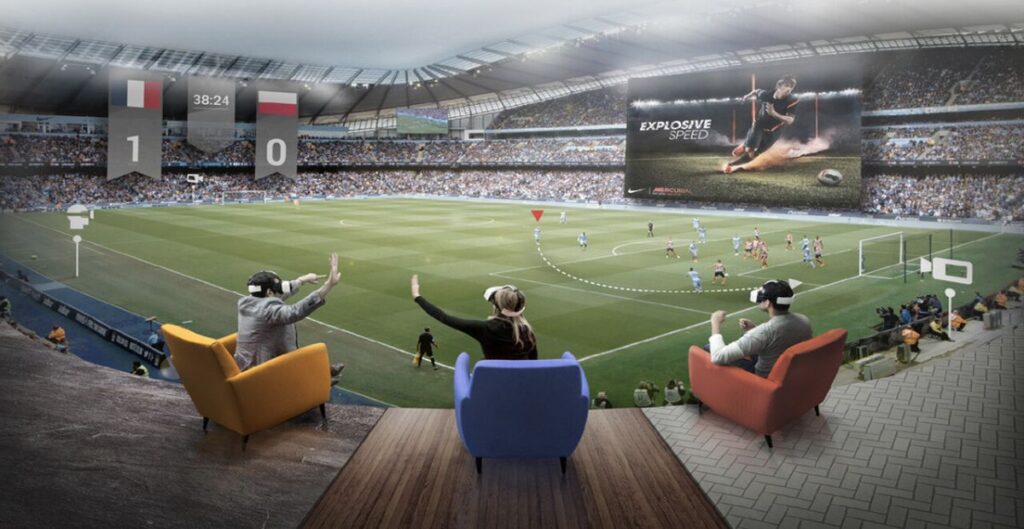Virtual reality is slowly finding its place in the world, but it can’t come quick enough for sports fans. The tech harbors the potential to allow them to make the shift from mere spectators to co-participants in the game they love.
With VR headsets, fans can find themselves virtually sitting in the best seats of a stadium, courtside, or even in the cockpit of a race car. The ability to look around, explore different angles and feel as if you’re physically present in the game enhances the sense of realism and excitement.
It still remains something of a niche market at the moment, with only 5% of all sports fans surveyed by Deloitte saying they’ve used VR to consume sports content.
But the buzz is there. When given a list of six different sports-related VR experiences, around 70% of Gen Z and Millennial fans were interested in at least one of them. Now it’s on sports teams, broadcasters and organizations to make it happen.

Enhanced interacivity
VR takes fan engagement to a whole new level by incorporating interactive elements into the viewing experience. Users can access player stats, replays and real-time data, all while immersed in the virtual environment.
Imagine watching a basketball game in VR and receiving live updates on players’ shooting percentages or being able to instantly replay a jaw-dropping dunk from any angle.
These interactive features enhance the educational and analytical aspects of sports, allowing fans to delve even deeper into the games and sports communities they love.
Social connection
While watching sports has always been a communal experience, VR introduces a social element that transcends physical limitations. Through VR platforms, fans can connect with each other, creating a shared viewing experience regardless of where they are in the world.
This fosters a sense of community and camaraderie, adding an extra layer of enjoyment to the sporting event. VR’s ability to bring people together breaks down barriers and expands the reach of sports fandom, making it a powerful tool for sports organizations to cultivate a loyal and engaged fan base.
Personalized sports realities
As VR technology continues to advance, the future of sports entertainment looks incredibly promising. With the potential for realistic haptic feedback, fans may be able to feel the impact of a tackle or the vibrations of a race car.
Personalized sports realities are of significant interest to Gen Z and Millennials, encompassing various aspects such as bidding, gaming, shopping, and building communities.
Studies indicate that 10% of Millennials desire an integrated shopping experience with their streaming, and about 20% of Gen Z and Millennials are interested in purchasing memorabilia even in the VR environment. This suggests a growing demand for new experiences like virtual meet-and-greets with athletes, training simulations, and in-game purchases of sports merchandise or memorabilia.
Real-time engagement
One striking trend observed among sports fans, especially Millennials, is their desire for instant engagement. For example, about 10% of Millennials expressed interest in the ability to instantly bid on a ball hit out of the park by their favorite athletes.
Organizations that fail to optimize their auction marketplaces risk losing out on the immense potential for real-time engagement. VR technology, with its interactive and immersive capabilities, presents a unique opportunity for sports organizations to cater to this demand and create novel, engaging experiences for their fans.
For sports teams, broadcasters, and organizations, embracing VR is not just an option but a strategic move to stay ahead of the curve and capture the hearts of the next generation of sports enthusiasts. If your organization’s marketplace is not being fully optimized, you are losing out!







